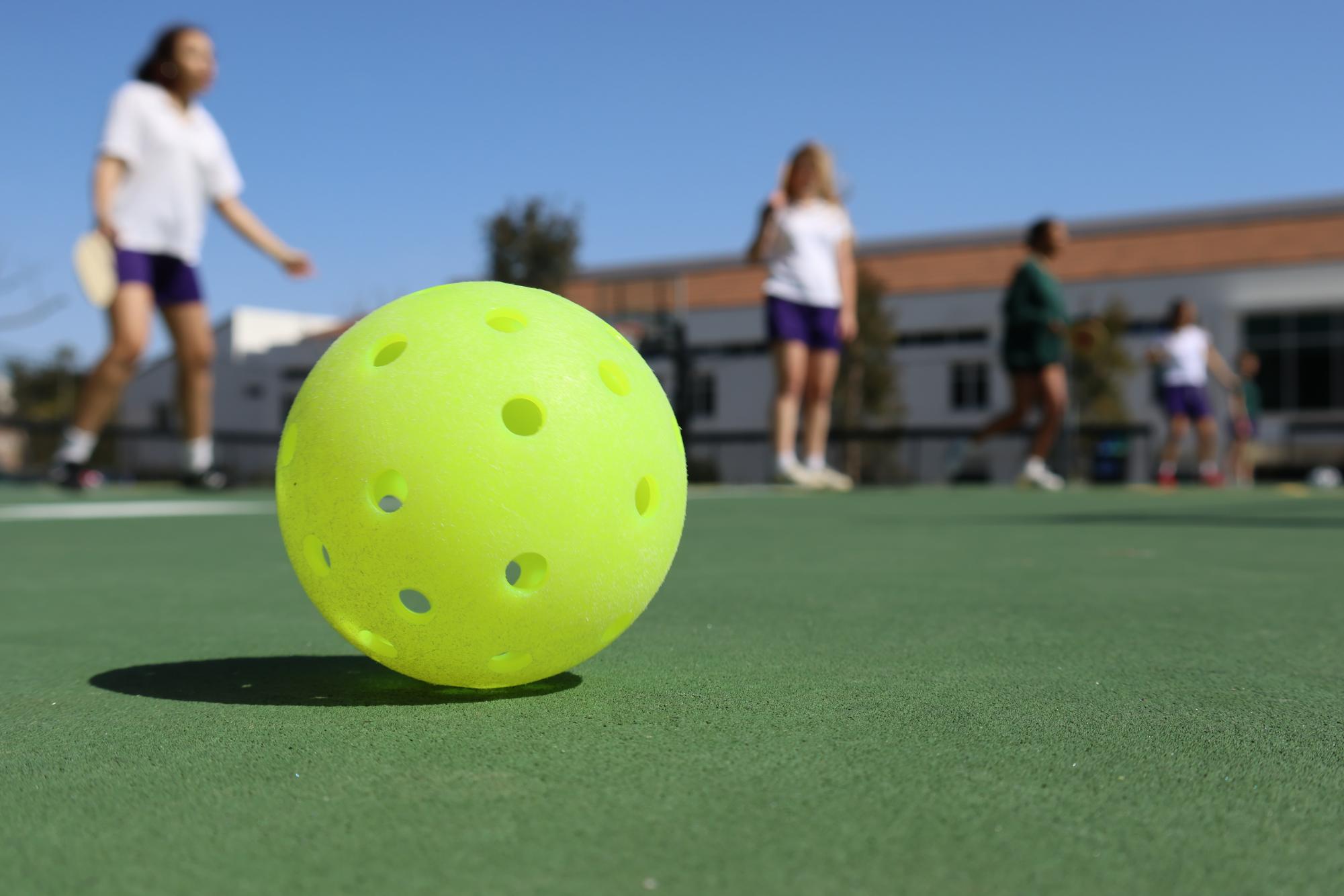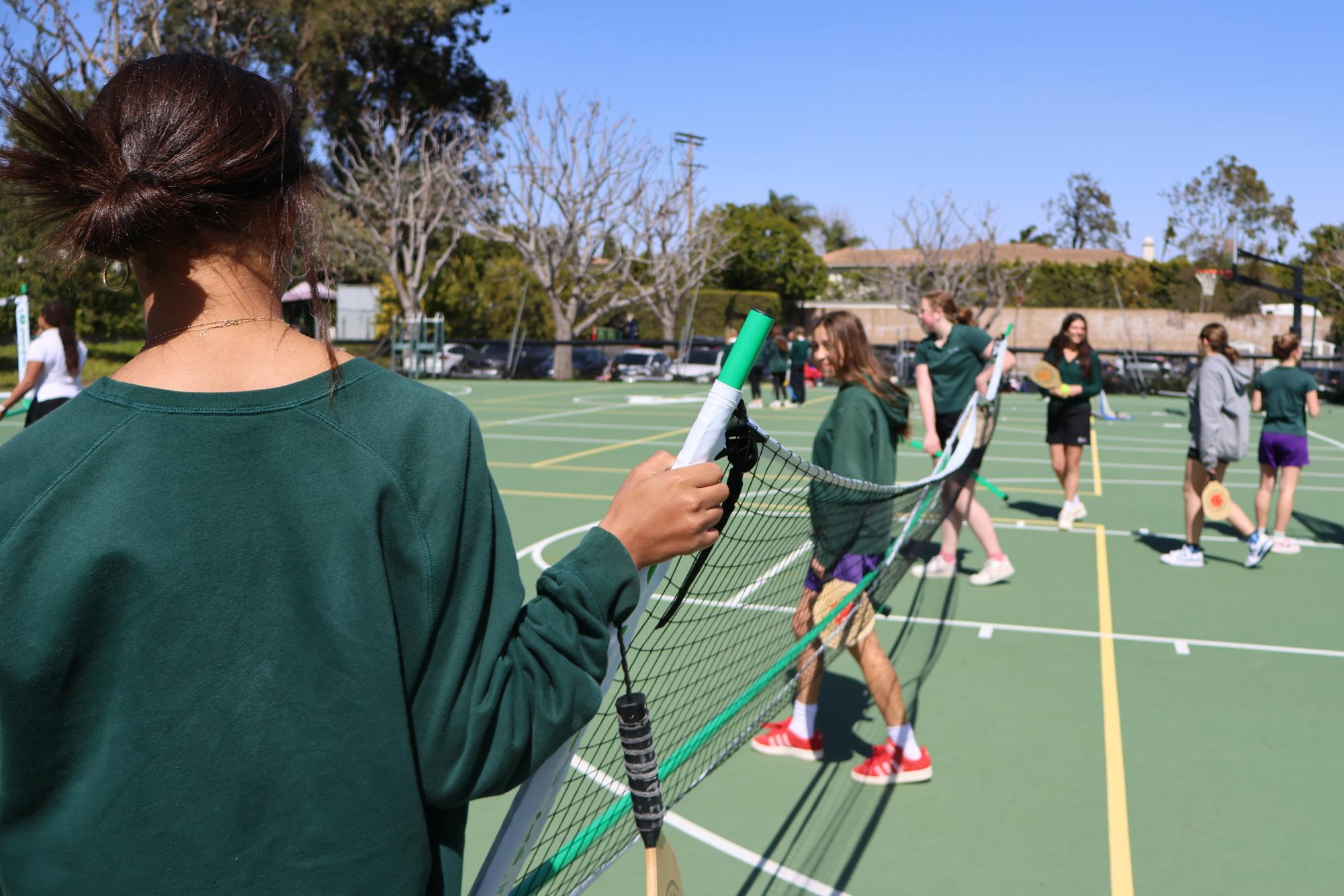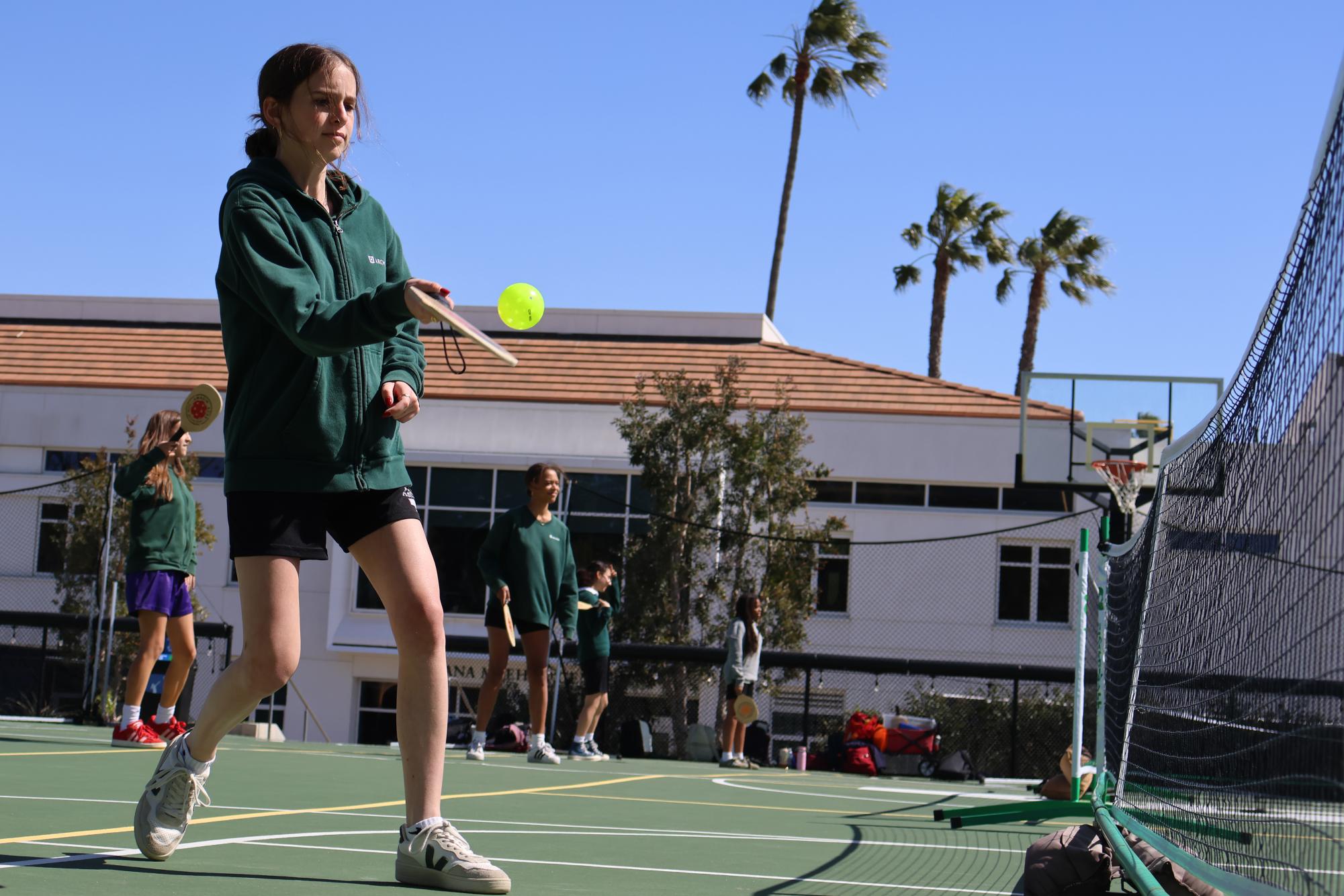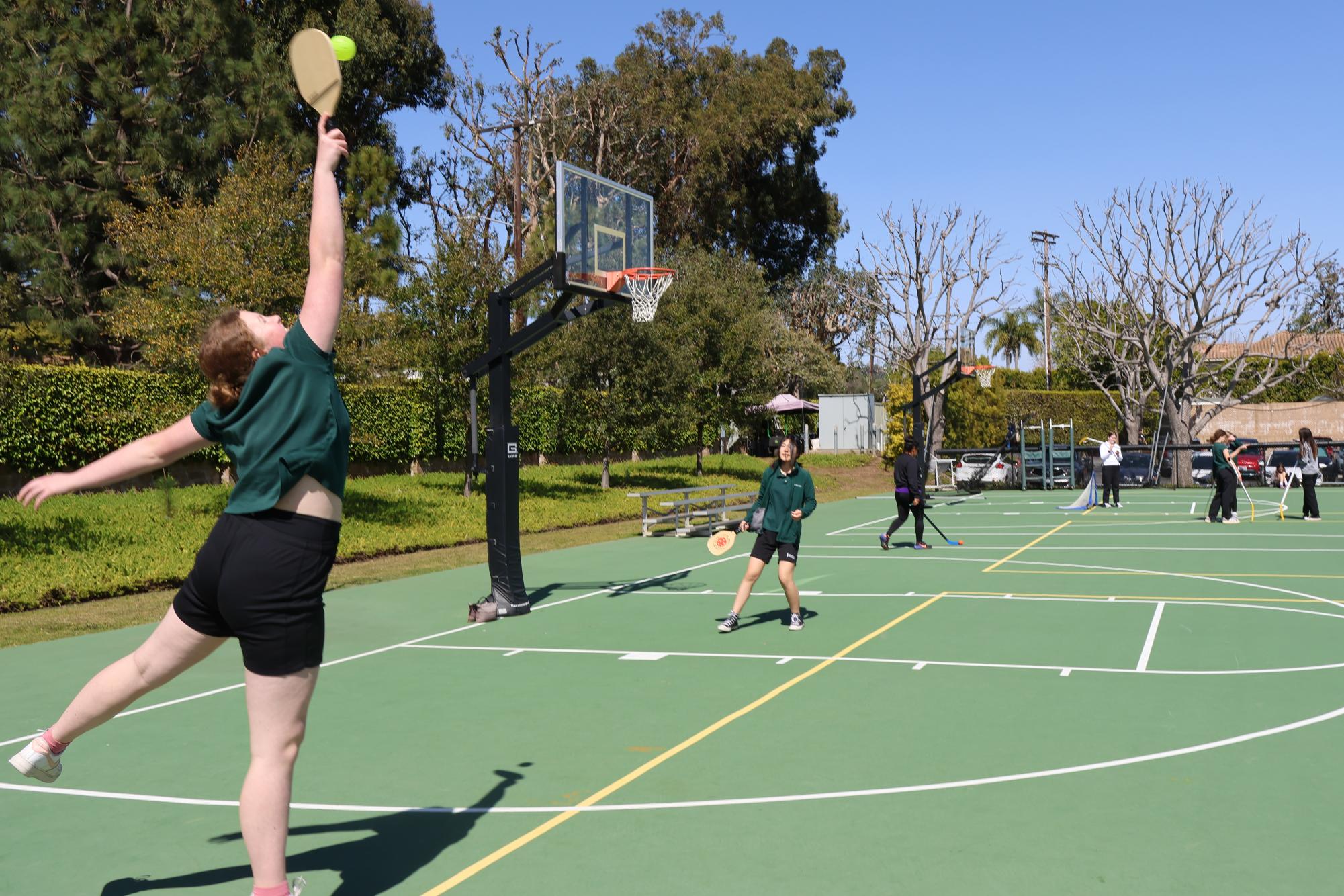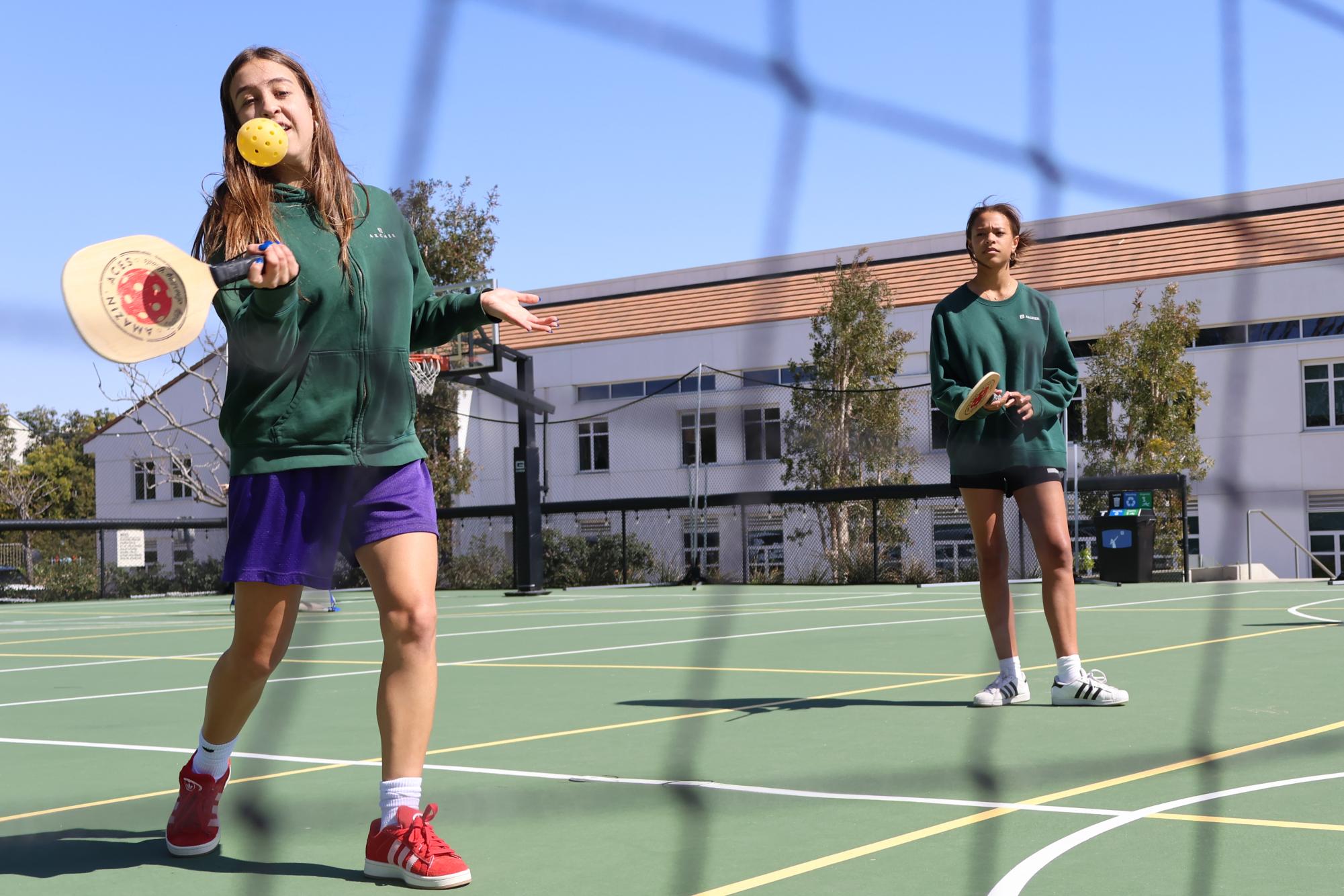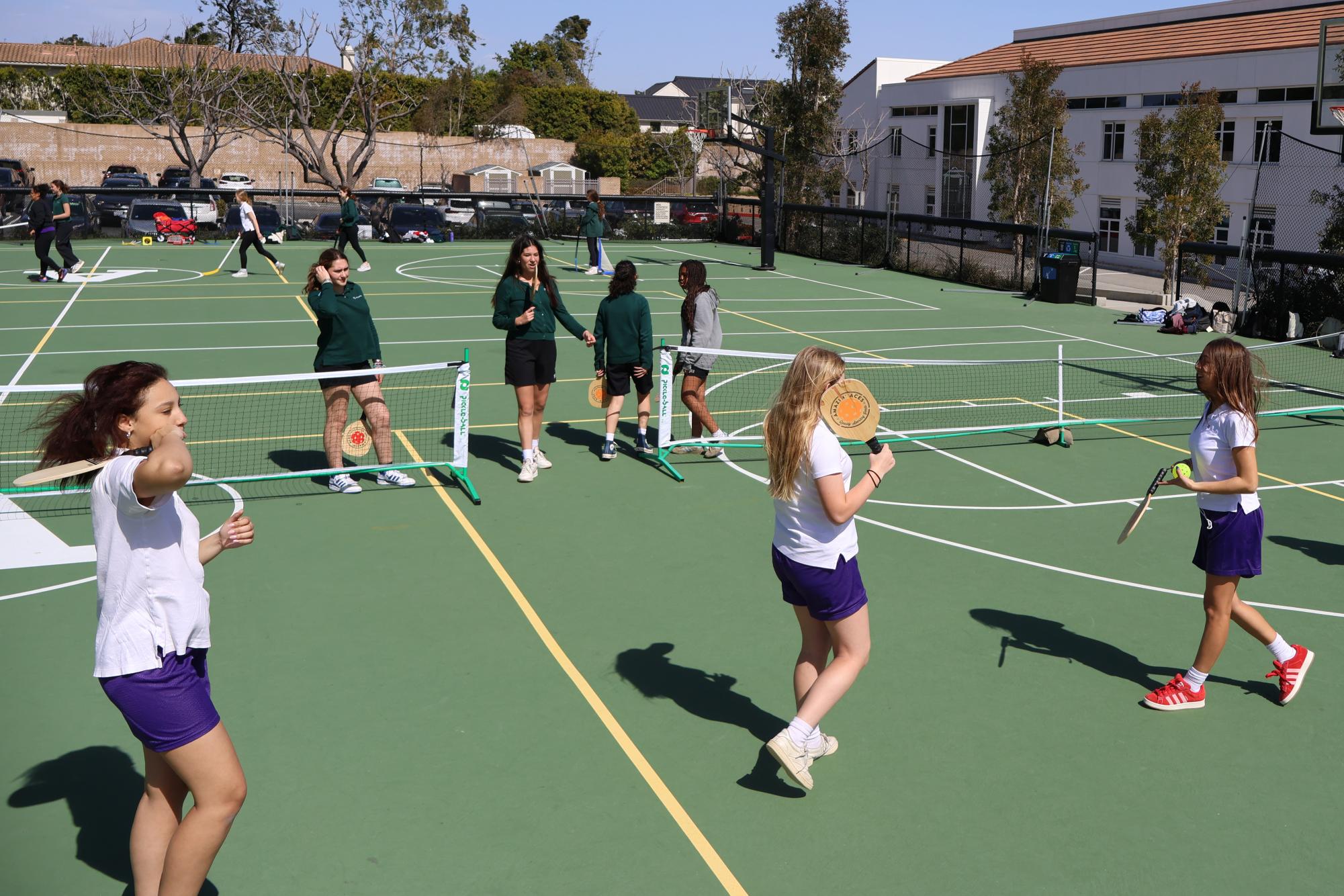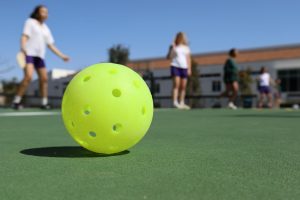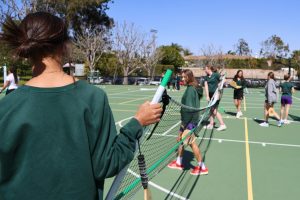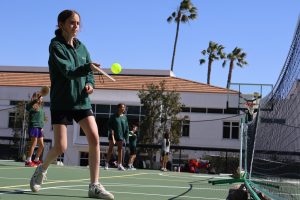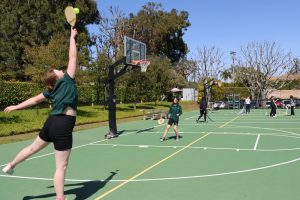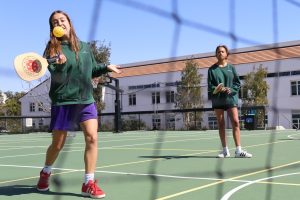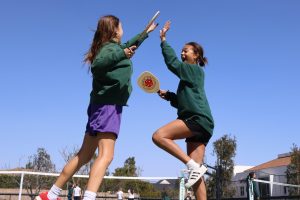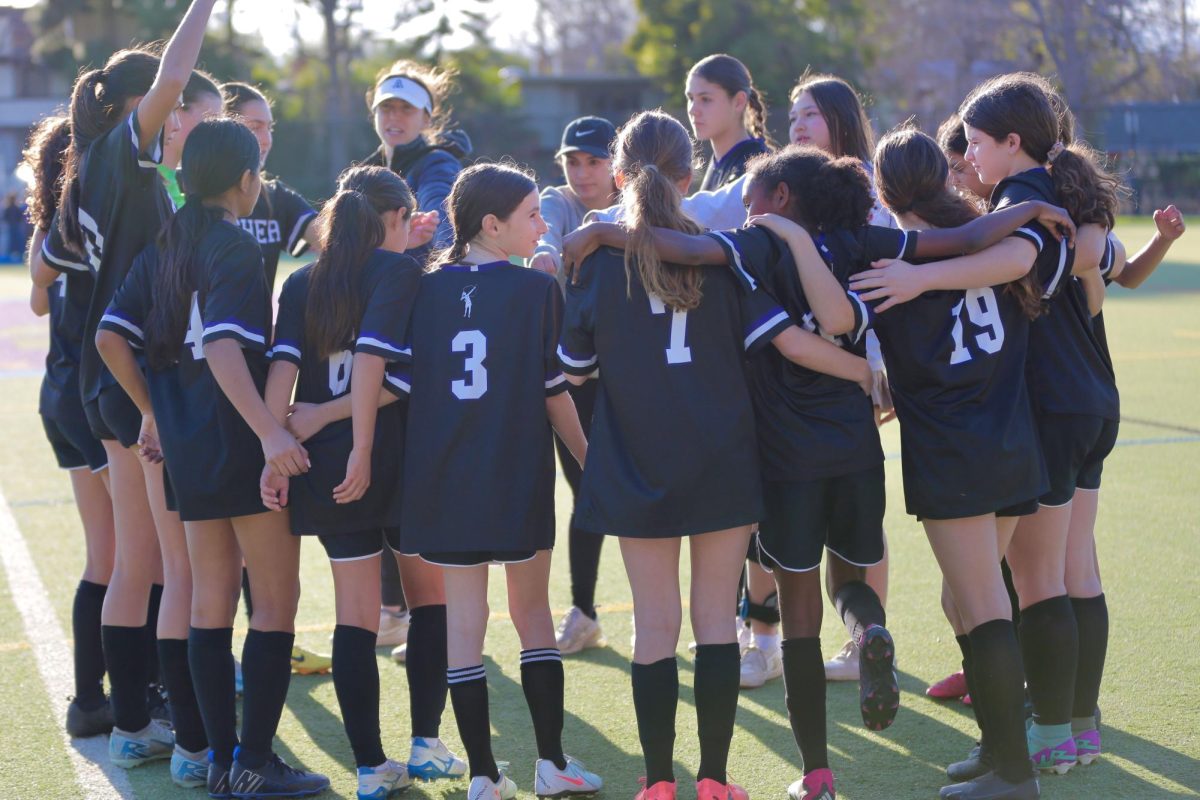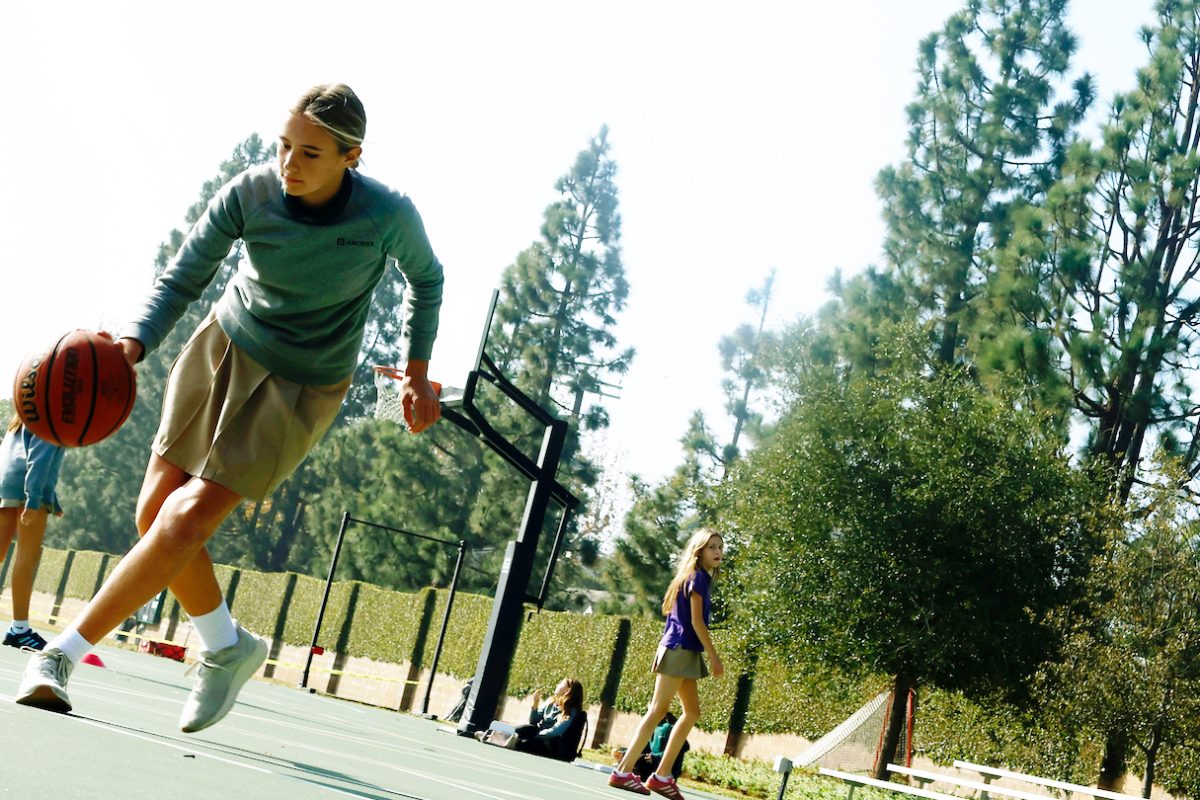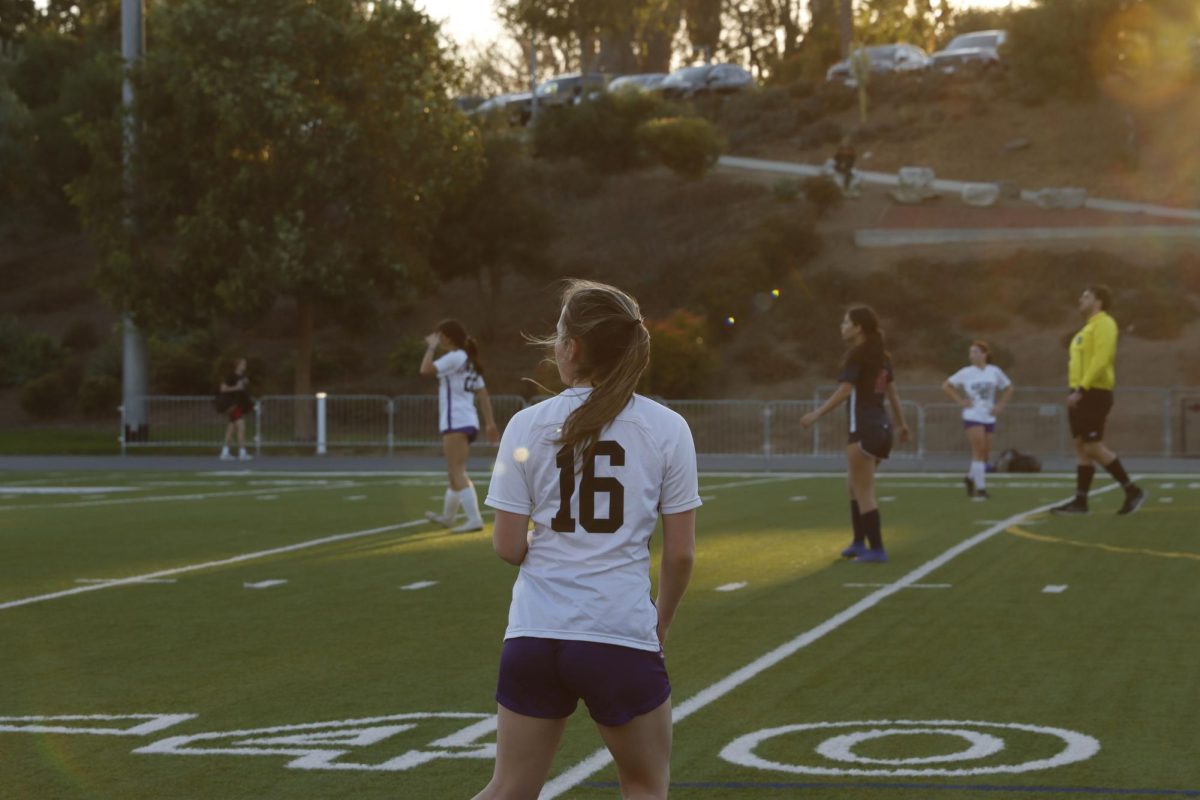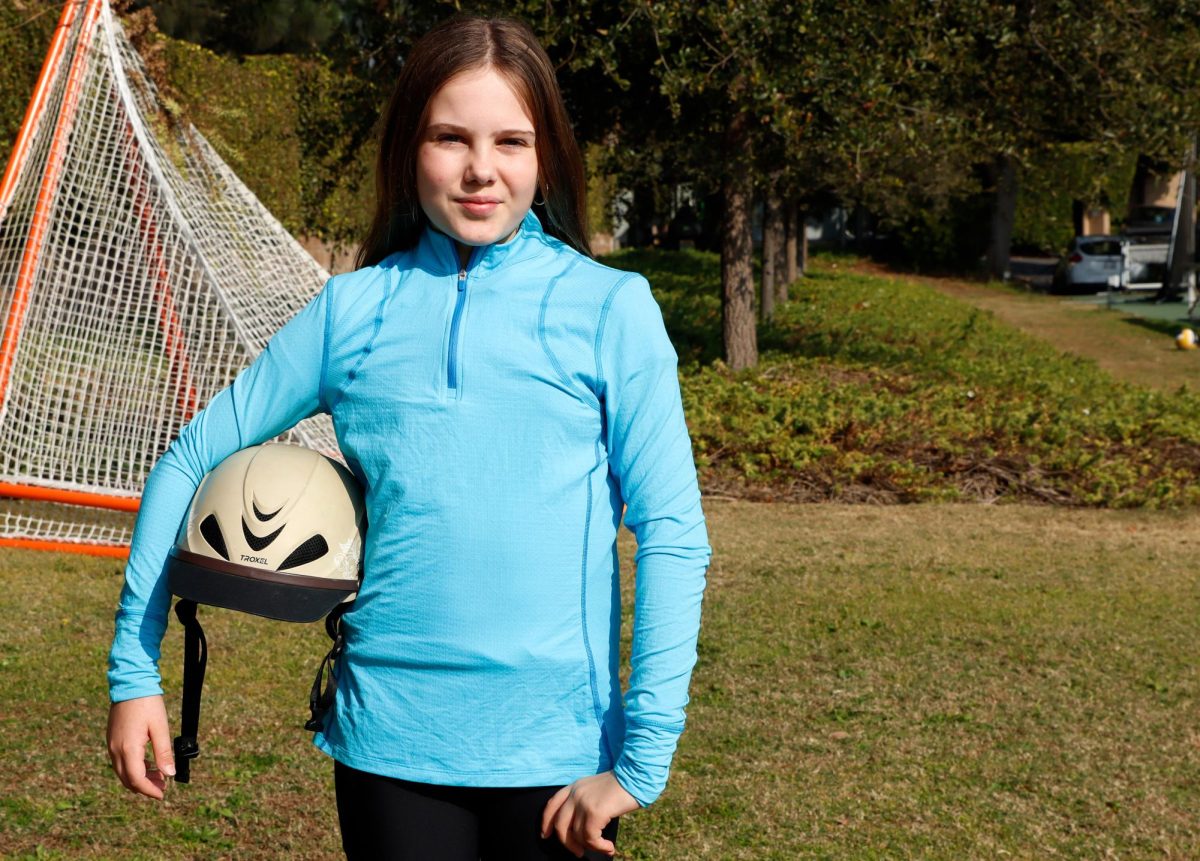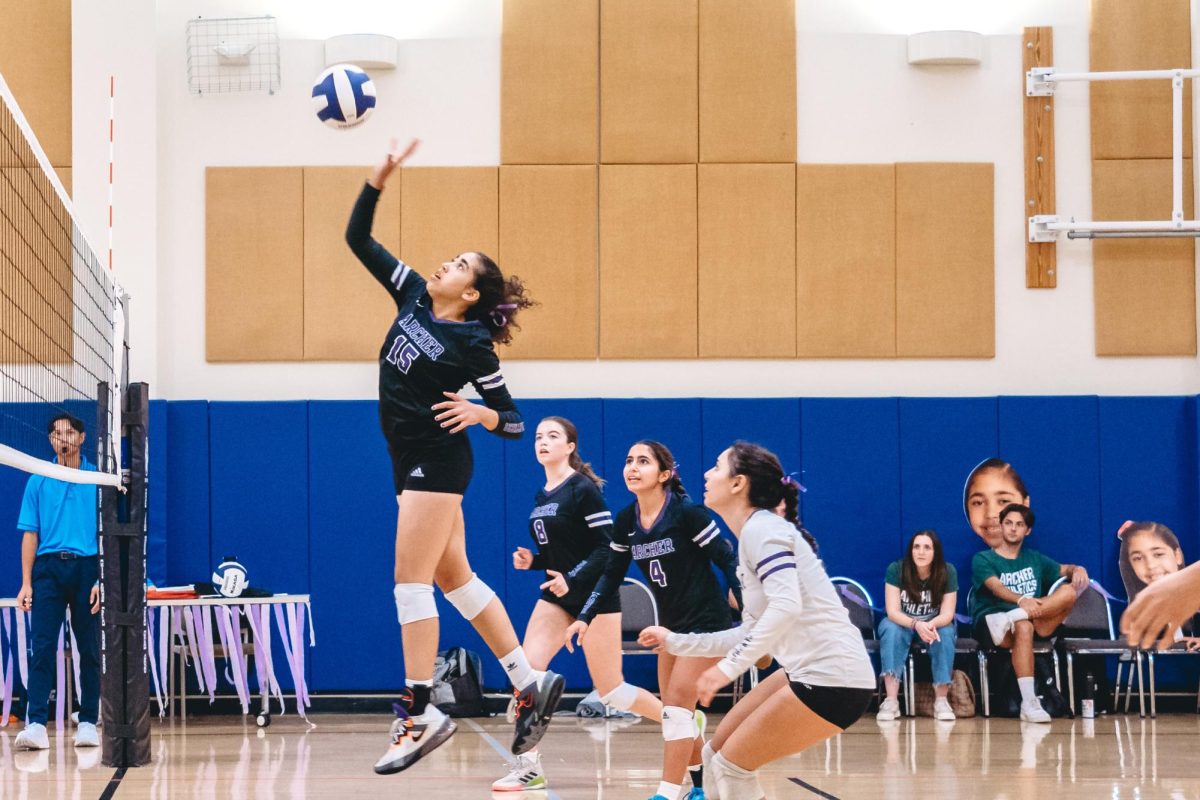It’s a Saturday summer afternoon in 1965, and two friends, Joe Pritchard and Bill Bell, returned home from golfing with nothing to do. They marched their way over to their property’s badminton court but were at a loss when they couldn’t find rackets to play with. No matter, though, as they had two ping pong paddles and a wiffle ball. As they discovered different tricks to enhance their game, they stumbled across what would become a 36-million-player, worldwide phenomenon: pickleball.
According to Sports News, pickleball was named after the “pickle boats” in the sport of crew. The pickle boat was comprised of rowers who were put together at random. The name is fitting considering the game is made up of miscellaneous pieces from badminton and ping pong.
Like many sports, the name doesn’t tell us much about the inner workings of the game. Pickleball is played on a 20 foot by 44 foot court with a net, two “kitchens” and four service boxes. Players serve underhand to the box diagonal to their box and typically move up into the court upon play. Players may step into the kitchen, a marked area just behind the net, but they cannot volley there. Other important rules include that players can only score points on their serve, and games usually go to 11 points, but you must win by two points.
But what is driving one in 10 Americans to play or try the sport? Dan and Amanda Keston are parents to Riley Keston (‘29) and Parker Keston (‘25) and are also regular “picklers.” Amanda Keston started playing pickleball during the pandemic. Dan Keston began playing at the beginning of 2023 after being unable to continue playing basketball and soccer. He explained how he was seeking exercise that was not too strenuous, but rather enjoyable and relaxing.
“When we started playing pickleball together, I would stay more at the backline and just hit it as hard as I could, and both of us ended up getting a little bit of tennis elbow,” Dan Keston said. “But that’s when we realized that in this game, you have to run into the net a lot, and it’s not really about sitting in the back doing forehand strokes, so that was when I got a better paddle and began taking it more seriously.”
The Kestons belong to the Jonathan Club, where there are many outdoor pickleball courts as well as a competitive league, which they won last year. Dan Keston plays anywhere between two to three times a week with a regular group of players.
“It’s a very short learning curve. People go out and play pickleball, and you immediately can be like, ‘Oh, I can do this.’ So you can become average fairly quickly. I think that appeals to a lot of people,” Dan Keston said. “The other thing is that it appeals to people of all ages. A big demographic is there’s a lot of people who haven’t played sports in 10 years or 15 years, and they’re in their 40s and 50s and 60s, but they can still play this sport.”
Despite having a reputation for being a sport for older generations and retirees, survey data debunks this myth. Almost 29% of pickleball players are between ages 18-34, which is the largest age bracket.
Francie Wallack (‘25) first heard about pickleball from her grandmother almost five years ago. Though she said she doesn’t get to play as much as she wants to, she still enjoys going to play with her friends and family.
“I was actually very hesitant to play because I kind of saw pickleball as fake tennis. But when I actually began playing it, I realized how fun it was because it felt less competitive than tennis,” Wallack said. “It’s fun to play with friends because you’re close to them so you can talk while playing, and it’s very social.”
Wallack is also a competitive tennis player, and she observed that many tennis players complain that pickleball is “taking over” tennis facilities. She explained that her philosophy is that tennis is for exercise and strategy whereas pickleball is for socializing.
“I think people my age are playing pickleball because it’s fun. We’re closer to our friends when we’re on the court so we can have conversations when rallying. The rules are also less tedious than tennis, and it feels like once you get the hang of it, then you just kind of know what you’re doing,” Wallack said. “And it’s less running which is really nice. But, I think some of the older generations like it because they do get a lot of exercise, but it’s not super strenuous.”
Pickleball is less expensive than tennis. The cost of tennis shoes, rackets and apparel can add up quickly, whereas pickleball paddles and balls are significantly cheaper. This might be another reason people are quick to jump on the pickleball bandwagon, according to Pickleball Kitchen. For racket sport clubs, four pickleball courts can fit on one tennis court. This means more revenue and customers for a cheaper price.
“You can have more people on the court and make it a more vibrant game,” Amanda Keston said. “So I think that’s one reason why tennis clubs and other places have adopted it because you can get more people out there and make more money. But I don’t think that pickleball will overtake tennis.”
Arguably one of the most noticeable upticks in pickleball players was during the pandemic. According to the U.S. News, there was a 40% surge in play, which was likely due to people looking for other forms of connection and exercise that was agreeable with the lockdowns terms.
Amongst the 10,724 places to play pickleball nationwide, Santa Monica Pickleball Center opened Dec. 4, 2022, and sees an average of 6000 players monthly. Jonathan Neeter has been the owner of the Santa Monica Tennis Center since 2010, which then expanded to Santa Monica Pickleball Center in 2022. He explained in an email how pickleball was a “social outlet” for people during the pandemic, and though it was a business risk, their four courts are busy and available for anyone to book today.
“It was more of serving the need we saw in the community for the growth of pickleball while still being able to service our long time tennis clients,” Neeter wrote in an email. “It was a ‘huge risk,’ but revenue numbers have doubled and the court and retail store has never been busier.”
It’s hard to know if the popularity of pickleball will continue to climb so rapidly, but it has left a lasting impact on communities around the nation. Wallack said that from affordability to facilitating community and exercise, pickleball is truly a sport for any level or age.
“It’s cool because it fosters both competition and community. It allows for people to get exercise or socialize, or both,” Wallack said. “It’s definitely a really unique sport, which I think draws so many people to it.”





